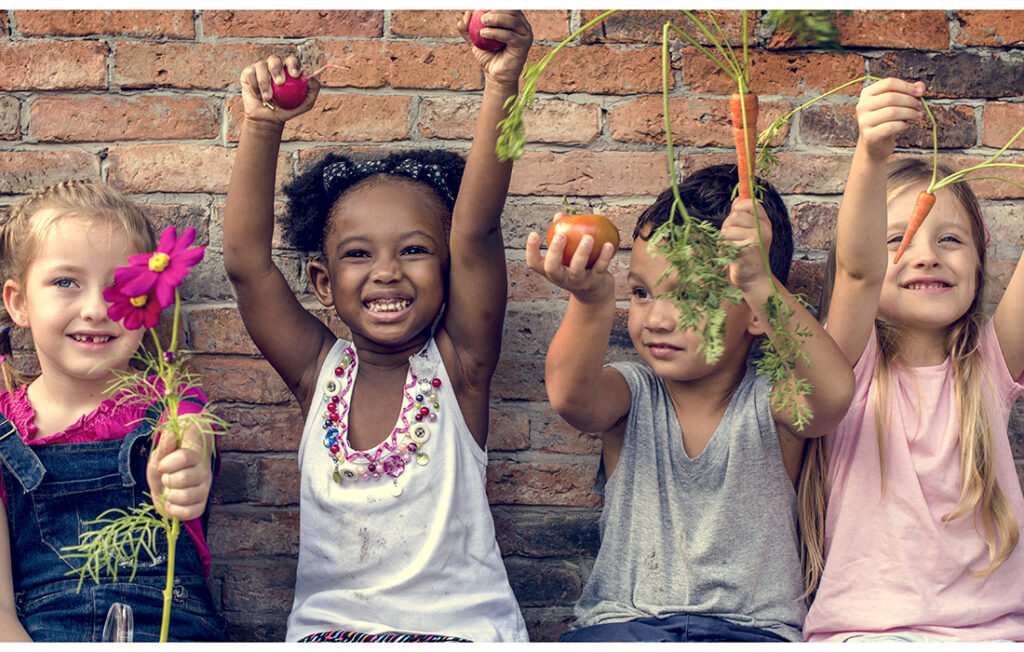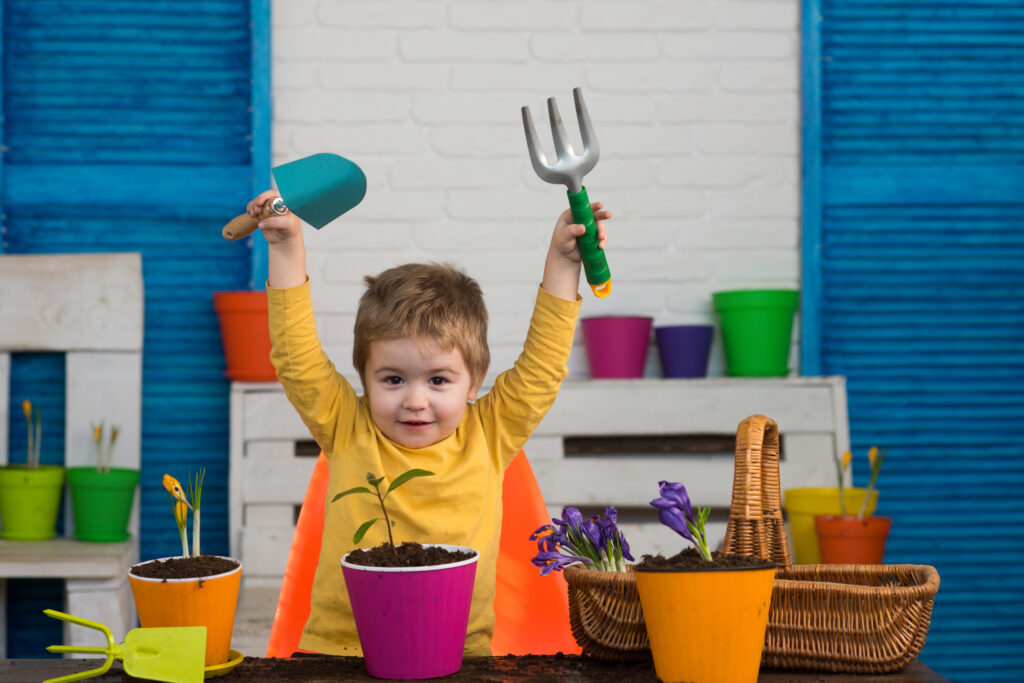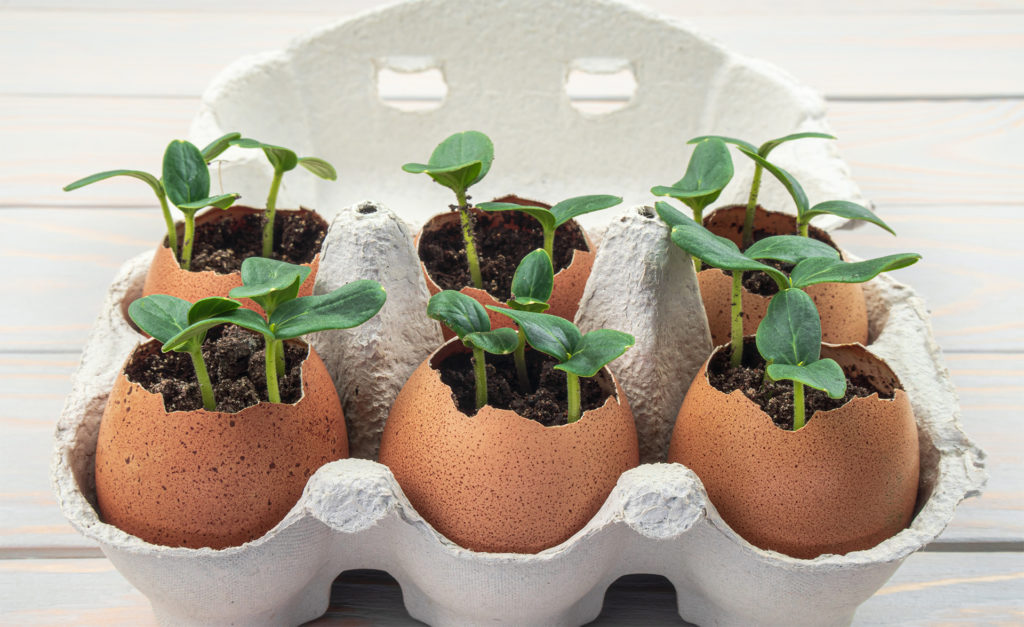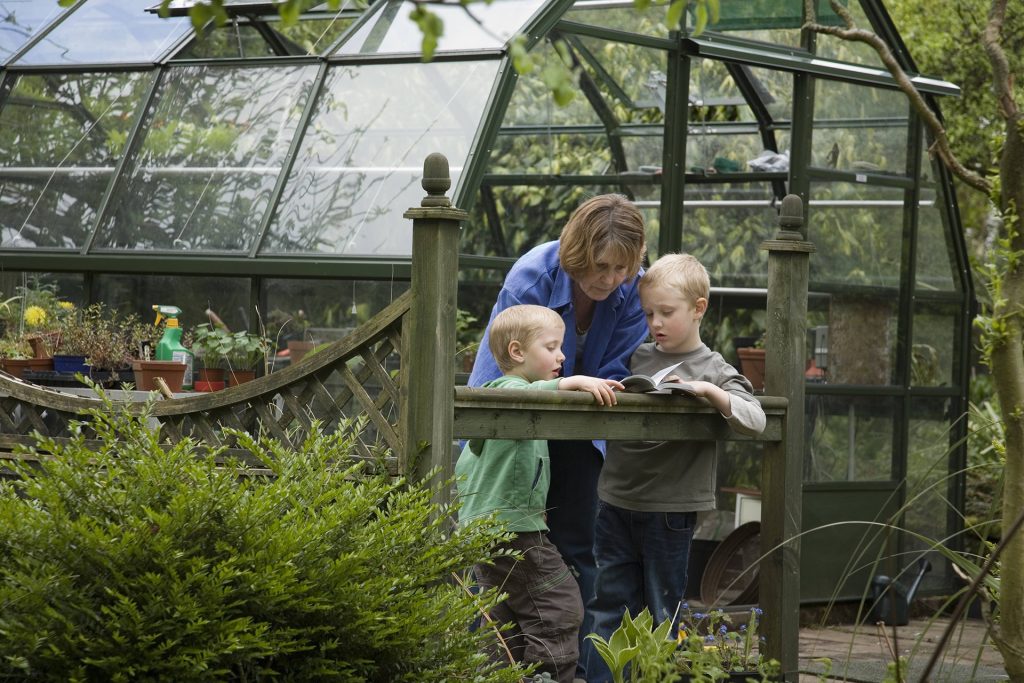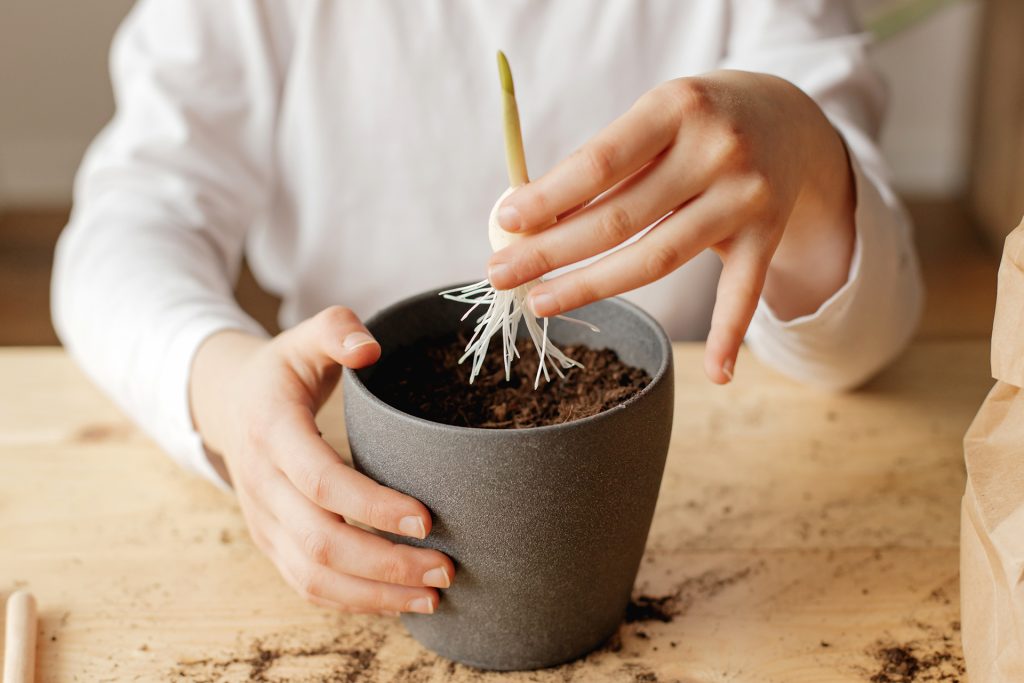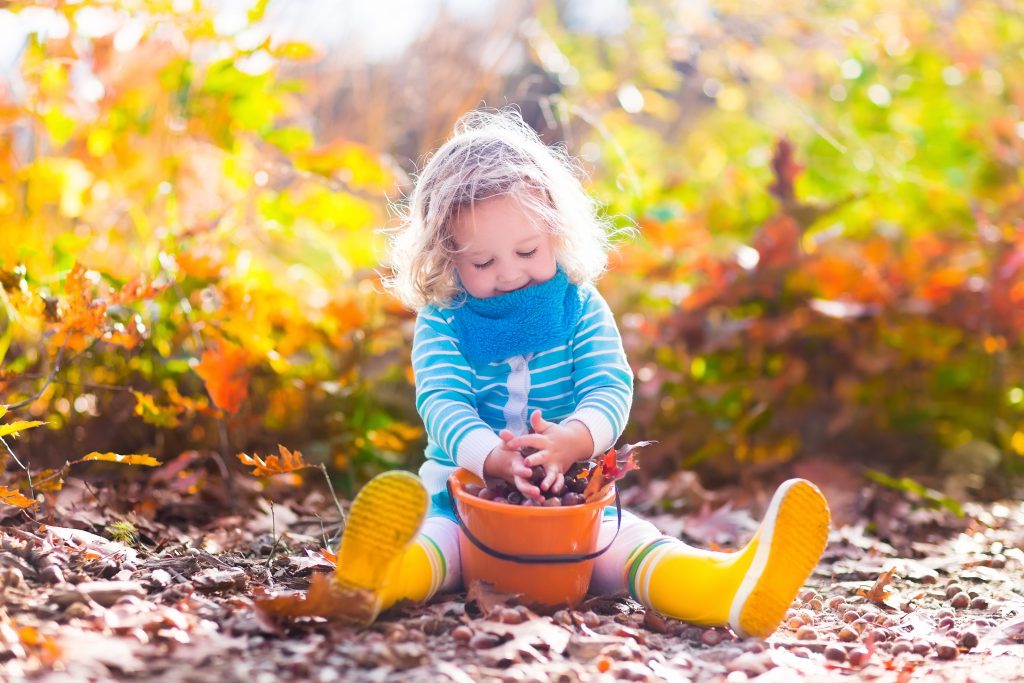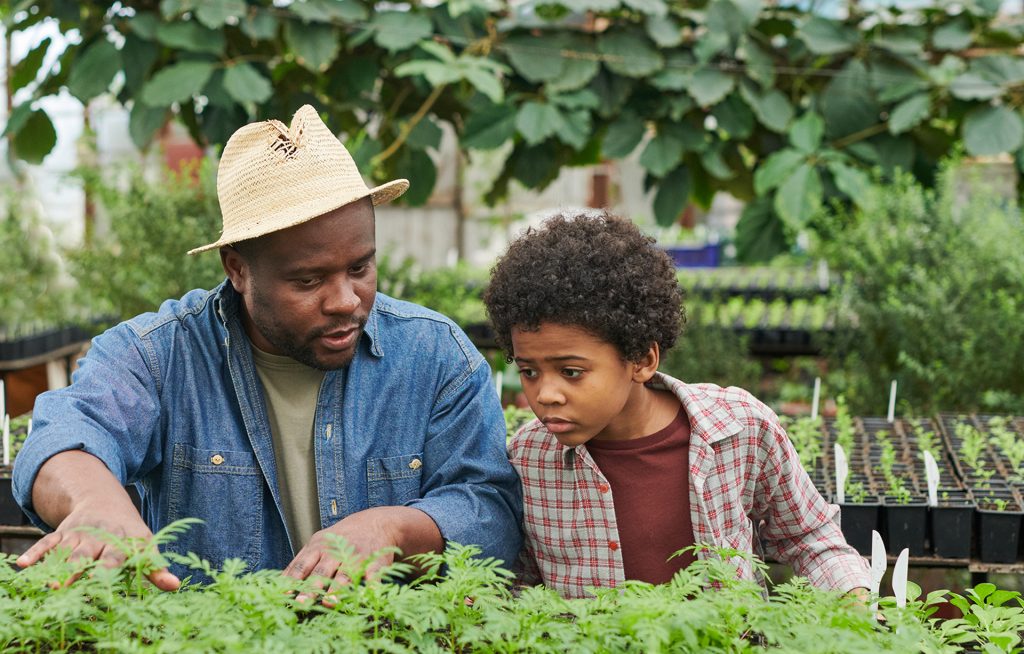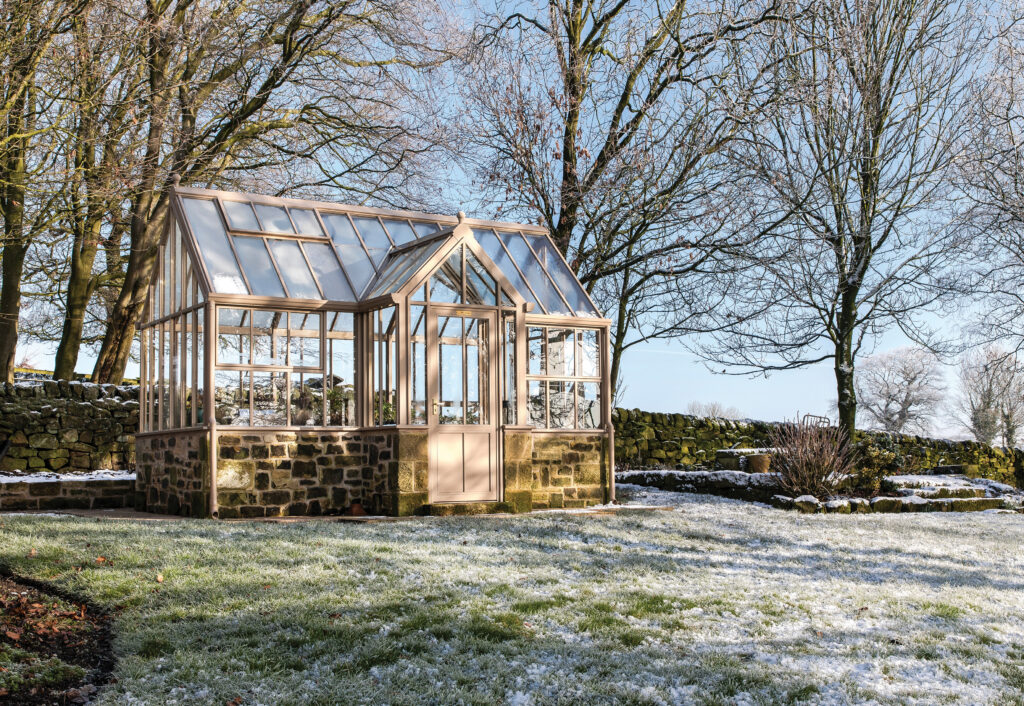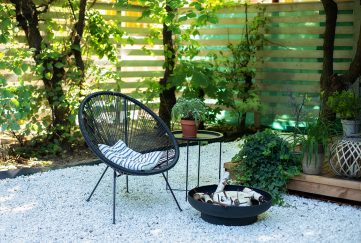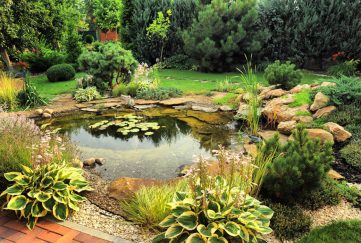Welcome Your Grandchildren Into The Greenhouse!
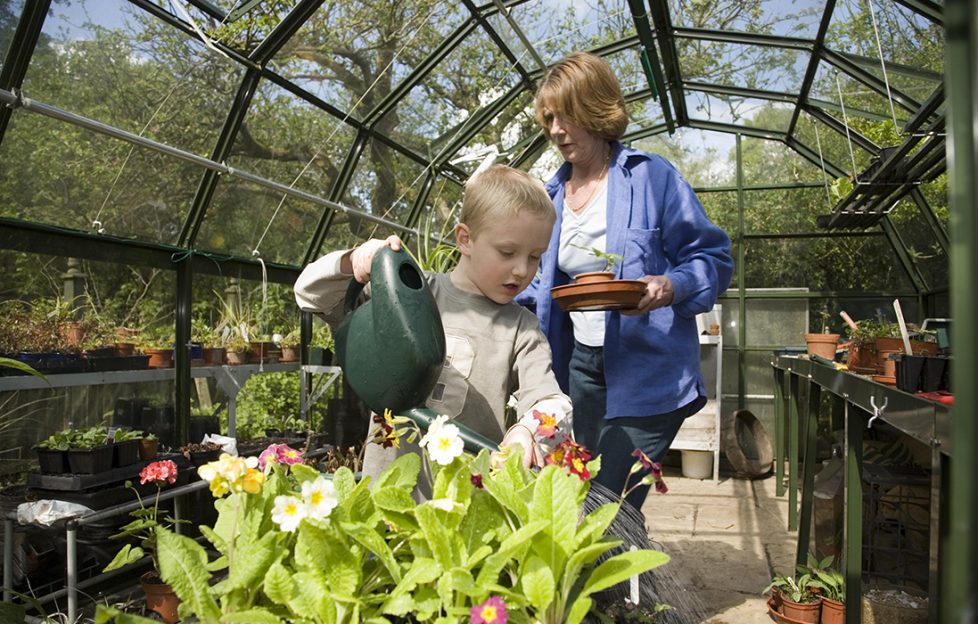
Do you have grandchildren to entertain this autumn half term?
Hartley Botanic has shared some greenhouse growing ideas and inspiration to both keep them occupied and instil a love of gardening that could last a lifetime.
Caring for plants can reduce stress and boost self-esteem, especially in children. It’s a way to connect with nature.
Tips for gardening with children
- Show them how to do it, then let them do it. Keep your explanations as simple as possible.
- The grown-up gardener is there for information and guidance, but when that first tomato appears on the family dinner table, the child should be able to brag that they grew it. And you grew a new gardener!
- Involve everyone in the planning stages — and listen to what children want.
- Make some areas active and devote some places to quiet.
- Give children simple projects, such as planting large seeds; encourage them to check on their growth.
Share space in your greenhouse for children’s creativity — it’s not always about garden work. It’s also about fun.
Starting a little area of their own within your greenhouse can feel very special for children. And as they come back and care for their plants, they will have a goal to work towards and learn about what plants need.
Teach them about water
With watering always on the to-do list, now is a good opportunity to involve your grandchildren and talk about its value. In times of shortages, ‘grey water’ saved from baths and washbasins can be used (if you only use a small amount of detergent), but not on edible crops.
Talk about any hosepipe bans that have been in place in your area so children learn that water is a finite resource rather than something which just flows automatically from the tap.
What to grow now…
Some crops bring results more quickly than others, which can help satiate children’s natural impatience. Growing fruit and vegetables shows children that food doesn’t start its life in the supermarket, and it can help encourage healthy eating.
Pip, pip, hooray!
Often the most rewarding greenhouse is one you’ve filled with plants you’ve grown from seed.
With your grandchildren, growing plants from seeds in the fruit they’ve eaten will provide a tremendous appreciation for nature. Growing from seed is also one of the most satisfying and cost-effective ways to grow plants.
The best first plants for children are things they can eat. Choose vegetables that will sprout and grow from seed, and that don’t have to go through a flowering-and-fruiting process. Choose edible roots, such as radishes or carrots, or leaves, such as lettuce or spinach.
There are vegetables, salads and even herbs, that will crop over the winter if you start now. And there are a few ways to cheat, too!
Focus on ‘hardy’ crops
When it comes to winter in the UK, anything you want to keep growing needs to be fully hardy. That means it can withstand temperatures down to about -15°C.
However if you can keep the greenhouse frost-free, then you can nurture a range of produce, from potatoes and onions to salads and herbs.
A greenhouse will create a protected climate so that plants can keep growing slowly through the winter. Put simply, a greenhouse will extend the growing season at both ends, and let you grow a bit more for a bit longer in between.
Take a short cut…
The vegetables you can grow in winter are limited by the lower light levels, shorter daylight hours and colder temperatures. But there are some easy things to start now – and ways to get ahead and cheat a bit.
Look out for winter cropping vegetable plants from mail order companies such as Thompson & Morgan or The Propagation Place. They have sown and grown the seeds and plants, and can supply cold-hardy vegetable plants to your door, all ready to plant. Choose hardy vegetables and salads and if in doubt, ask for advice.
Easiest winter edibles to grow for beginners
Peas
Cropping pods of peas over winter? That’s not going to happen! But you can sow and grow peas in November and pick pea shoots, pea tendrils and pea leaves. They taste just like peas, and make a tasty addition to sandwiches, salads and menus. Every high-end restaurant uses these morsels for garnishing their dishes.
You can crop the pea shoots three or four times. Then you can plant out strong pea seedlings in spring and enjoy an earlier crop of pea pods. Sow them in short lengths of gutter or shallow seed trays.
Garlic
Garlic cloves can be planted in the greenhouse in pots in November. Garlic is fully hardy and in milder spells will root and put on some growth. Look out for winter planting varieties available to plant in November and December.
Don’t expect to be able to eat the actual planting cloves, or to be able to harvest any crop apart from occasional leaves and shoots for flavouring. But if you can get your hands on some bulbils of Babington Leeks and plant them into pots of compost in late autumn, you can harvest the resulting mild garlicky shoots as soon as they form.
Mustard and mizuna
Both mustard and mizuna can be sown and grown over winter. Seeds do need a little warmth to germinate, but a few sunny days or a heated propagator can get them started.
Be watchful for grey mould, which can flatten and kill young seedlings quickly and spreads fast. Mustards can be particularly useful for adding punchy flavour to dishes with just a few torn leaves.
Broad beans
Many gardeners sow broad beans in autumn for an earlier crop of beans next season, but others grow them for their edible shoots and leaves. A seed tray of broad beans can generate a reasonable amount of leaves and shoots for stir-fries, salads and more.
Spinach
Choose the perpetual spinach or Swiss chard varieties, which are cold-hardy and will provide a crop of tasty fresh leaves for your winter menus.
You can get them started in the greenhouse, but it’s always better to sow late summer and then harvest the leaves as they grow over the winter.
Lambs lettuce (corn salad)
There’s a very underrated leafy salad crop that is winter hardy.
Corn salad, sometimes called Lamb’s Lettuce, is very easy to grow from seed and makes a rich green rosette of leaves that can be picked for winter salads.
Sow it in trays, troughs or as a ‘ground cover’ around overwintering kales. It’s fast to germinate and will quickly provide a steady supply of winter salad leaves.
It’s a mild flavour and great for garnishes. If you let it flower and set seed, you’ll have plants forever more.
Winter lettuce
There are other winter hardy forms of salad lettuce that you can sow and grow in a glasshouse over winter. For winter lettuce varieties, consider things like ‘Winter Gem’ or look out for special winter mixes.
Sow again under glass in February to get an early crop started for spring and summer.
Winter herbs
Winter herbs are in a class of their own and can be grown and harvested all through the winter.
Rosemary, sage, thyme and maybe some marjoram are good plants to start with, but you can add salad burnet and winter savoury to the collection too.
Herbaceous herbs that die back for winter can be cajoled into growth by potting them up in a quality compost and bringing them into a greenhouse. Herbs like mint, lovage, chives and fennel can be persuaded to produce a few tasty leaves and stems to transform your winter menus.
Fun ideas in the garden
Plan a scavenger hunt
Create an engaging scavenger hunt around the garden with tasks for your grandchildren to accomplish. Some examples of things they can search for include a flower bud, leaves longer than their fingers, a plant the colour of their shirts and more. Snap photos along the way and add them to their garden journal to extend the learning once you’re back inside.
Create a garden journal
Let your grandchildren pick out a notebook to record what they do in the garden each time they visit. Encourage them to draw pictures of the plants as they are growing in order to track their growth.
“Passing on the joy of growing”
Hartley Botanic Greenhouse owner Nigel Metcalfe shares how his love of greenhouse growing has been a family affair.
Ever since helping his grandfather Sydney in his greenhouse, Nigel Metcalfe (66) from Kent had always dreamed that one day he would be able to buy his own.
In 2018, when he retired, Nigel and his wife Alison bought a Hartley Botanic Victorian Grand Lodge, with canopy and pergola addition. As well as producing delicious fresh vegetables and fuelling their own gardening pleasure, the greenhouse has also meant quality time with their grandchildren.
“I have two grandchildren and they love growing with me in the greenhouse. They are particularly interested in fast-growing edibles like beans. They also really enjoy picking tomatoes and cutting cucumbers with me.
It is tremendous to pass on the joy of growing to them, especially as that is what my grandfather did for me.”
Greenhouse memories to last a lifetime
There is something magical about growing under the cover of a beautiful greenhouse filled with plants and accessories. For children, a greenhouse can be a treasure trove to explore.
Whether that’s plants at various growing stages neatly arranged on levels of staging, what you’re doing on the potting shoe, or the sound of the radio and the pattering rain overhead – it can be a powerful way to build unique and lasting memories.
Your grandchildren may very well inherit your greenhouse. In a throwaway age, Hartley Botanic makes greenhouses and glasshouses which truly stand the test of time. The company are regularly contacted by customers who have decades-old greenhouses still providing excellent service – including those that have been dismantled and reinstalled.
The company offers a 30-year lifetime guarantee covering both the structure and installation of its greenhouses and glasshouses (subject to terms and conditions).
All Hartley Botanic’s Glasshouses and Greenhouses are handmade, bespoke and made to order. Customers interested in purchasing a Hartley Botanic Greenhouse should visit hartley-botanic.co.uk or call 01457 819 155 for more information.


